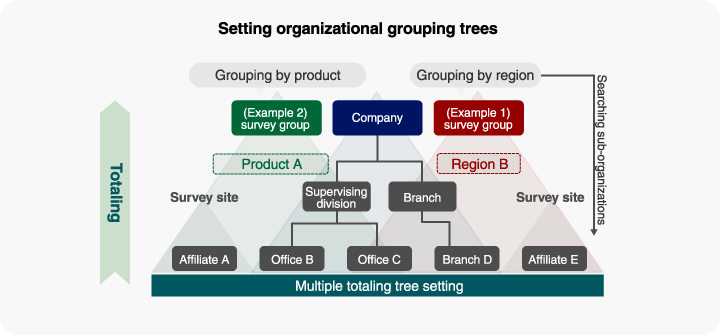EcoAssist-Enterprise for Environmental Information Management
These days, many companies are engaged in various environmental activities, such as reducing electricity costs and disclosing information for the purpose of attracting ESG investments. Such information might include a company’s efforts to comply with the Law Concerning the Promotion of Measures to Cope with Global Warming and the Law Concerning the Rational Use of Energy, to achieve the SDGs, and to respond to the TCFD and CDP. To carry out these environmental activities, a centralized information management system is needed.
With EcoAssist-Enterprise, you can collect various types of environmental information (such as information on the amount of greenhouse gas emissions, the usage rate of Eco Mark-certified products, and the total amount of material investments) from numerous sites including sites in other countries, and centrally manage that information in an environmental information database.
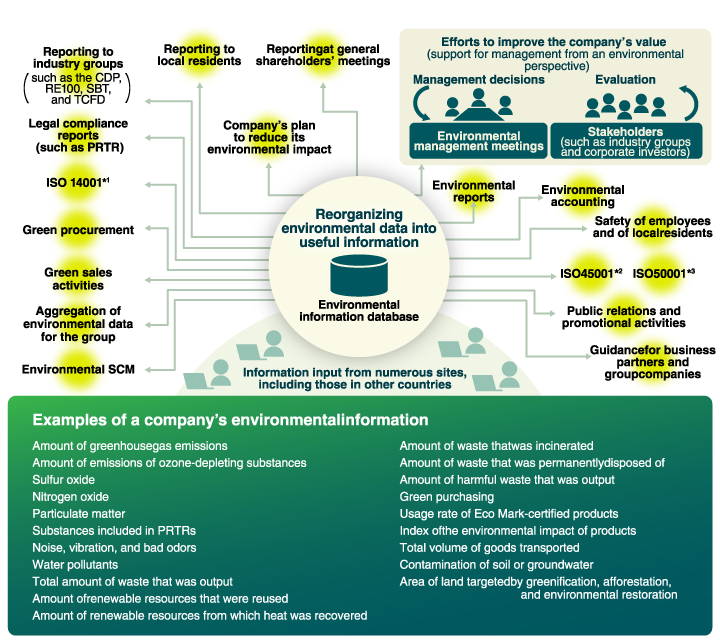
ESG investments: Investments where the investor values and makes investment decisions based on a company’s impact in terms of the environment, society, and governance.
SDGs: Sustainable Development Goals
TCFD: Task Force on Climate-related Financial Disclosures
CDP: Formerly the Carbon Disclosure Project. This project, together with institutional investors, asks companies to disclose information such as their strategies related to climate change and details on their amount of greenhouse gas emissions.
RE100: Renewable Energy100
SBT: Science Based Targets
PRTR: Pollutant release and transfer registers
SCM: Supply chain management
*1:Environmental Management System
*2:Occupational Safety and Health Management System
*3:Energy Management System
After each department in the organization inputs various types of environmental information, the information can be shared in the form of an environmental information database. You can use this database to improve your organization’s environmental management, or to disclose information or submit reports to the organization in charge of the SDGs, the TCFD, or the CDP for the purposes of legal compliance or attracting ESG investments.
We help you record and retain data on the amount of energy consumed across your organization as a whole (headquarters, factories, branch offices, stores, business sites, etc.), and provide regular, aggregated reports on energy consumption based on the consumption of crude oil.
We connect, as IoT devices, the various measuring devices throughout a facility (such as distribution boards and devices that measure the amount of received electricity), enabling measurement data to be automatically registered and aggregated in a cloud database.
The items that should be managed as environmental information change over time, as does an organization’s structure. To accommodate such changes, EcoAssist-Enterprise allows you to flexibly define management items and groups in your organization, and enables you to read and write data that changes by the hour. With EcoAssist-Enterprise, data is plotted in a coordinate space with axes representing groups in your organization, management items, and time; and the reading and writing of management items corresponding to the time axis are carried out in a tree structure. You can add or change items managed as environmental information and change conversion factors as needed, without affecting past aggregation results.
From a list of items that can be managed as environmental information, you can select the appropriate items based on your organization’s needs or purposes. The configuration of settings related to conversion factors (which takes a lot of work) and other maintenance work is carried out through the EcoAssist-Enterprise cloud service.
You can set access permissions for each user or group in your organization, to allow people at other sites to input and output data.
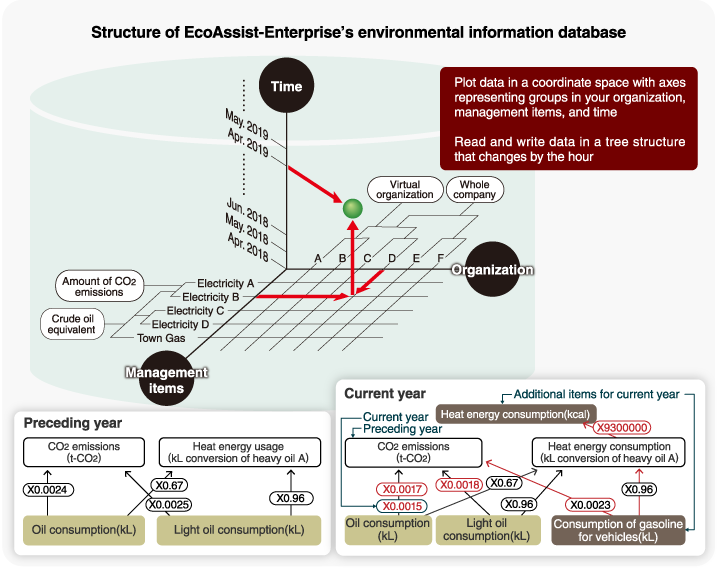
With EcoAssist-Enterprise, you can input and output data by using a common interface (viewable in a web browser) or by using Excel spreadsheets, currently used in your work.
For example, you can use a web browser to register small amounts of data, and Excel spreadsheets to register large amounts of data. Various approaches are possible, allowing you to freely choose an approach that suits your operations. You can even register to the database data from various Excel spreadsheets in different formats. During registration, you can link the corresponding management items, thereby unifying the format.
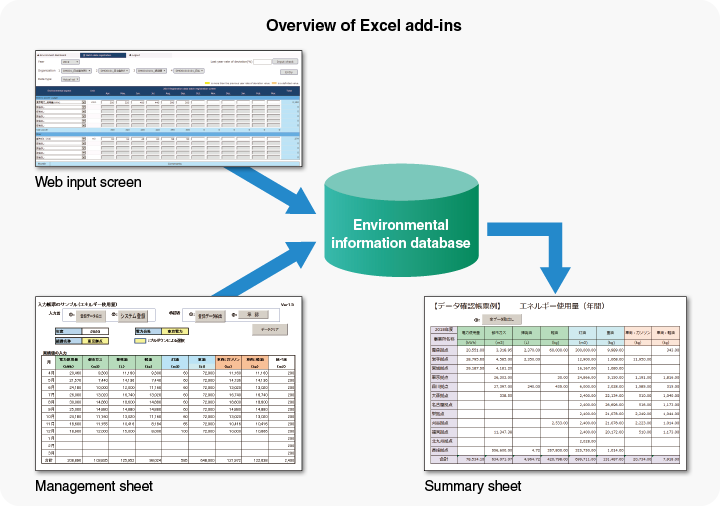
To achieve environmental management, you must be able to manage in an integrated manner the data collected from various sites around the world, and to analyze that data. However, the data to be collected and appropriate report formats vary depending on each region’s laws and regulations.
EcoAssist-Enterprise provides environmental information dashboards in English, Japanese, and Chinese, where you can set the management items (such as groups and fiscal years) to be aggregated by region or by business type. You can then compare data broken down by month or by target, compare cumulative figures, and display the results in graphs.
By using the function for downloading data in XML format, JSON format, or Excel format, you can create reports in the format required for each site.
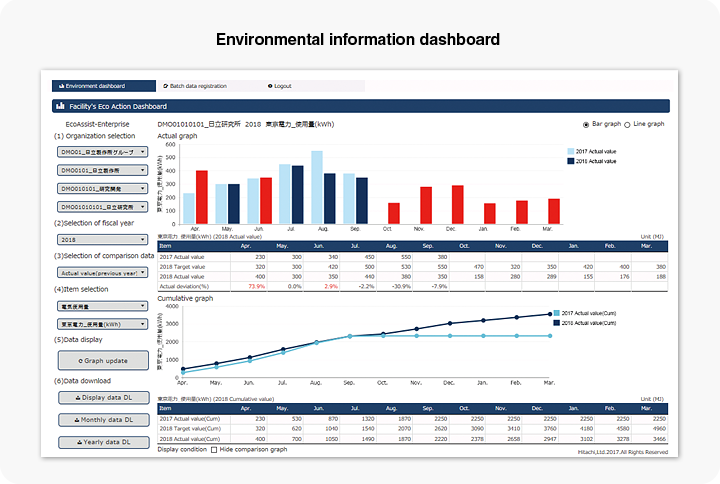
In addition to organizing data into trees based on actual groups in your organization, you can also organize data into trees based on arbitrary groups, such as product groups or regional groups. This enables you to aggregate data from various perspectives. By drilling down in the data (moving from general to specific) or reverse-searching data by management item, you can use the environmental information dashboard as a tool for tracing causes of events and to achieve environmental management.
